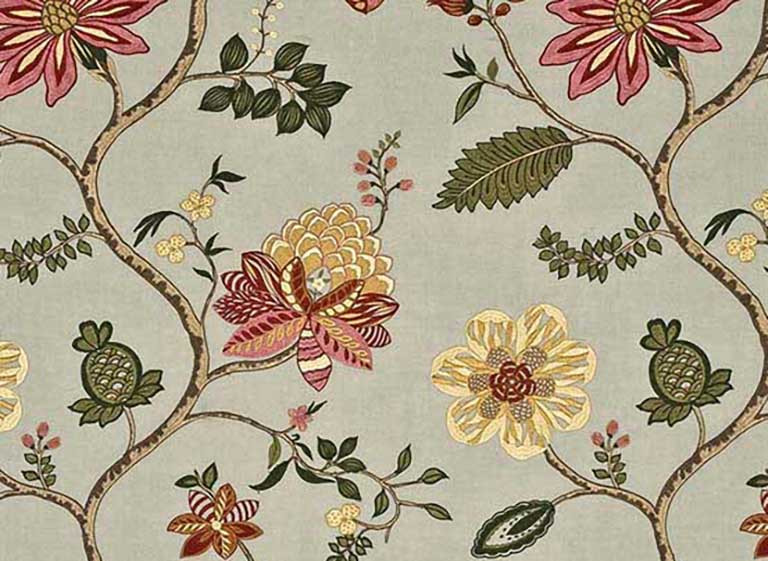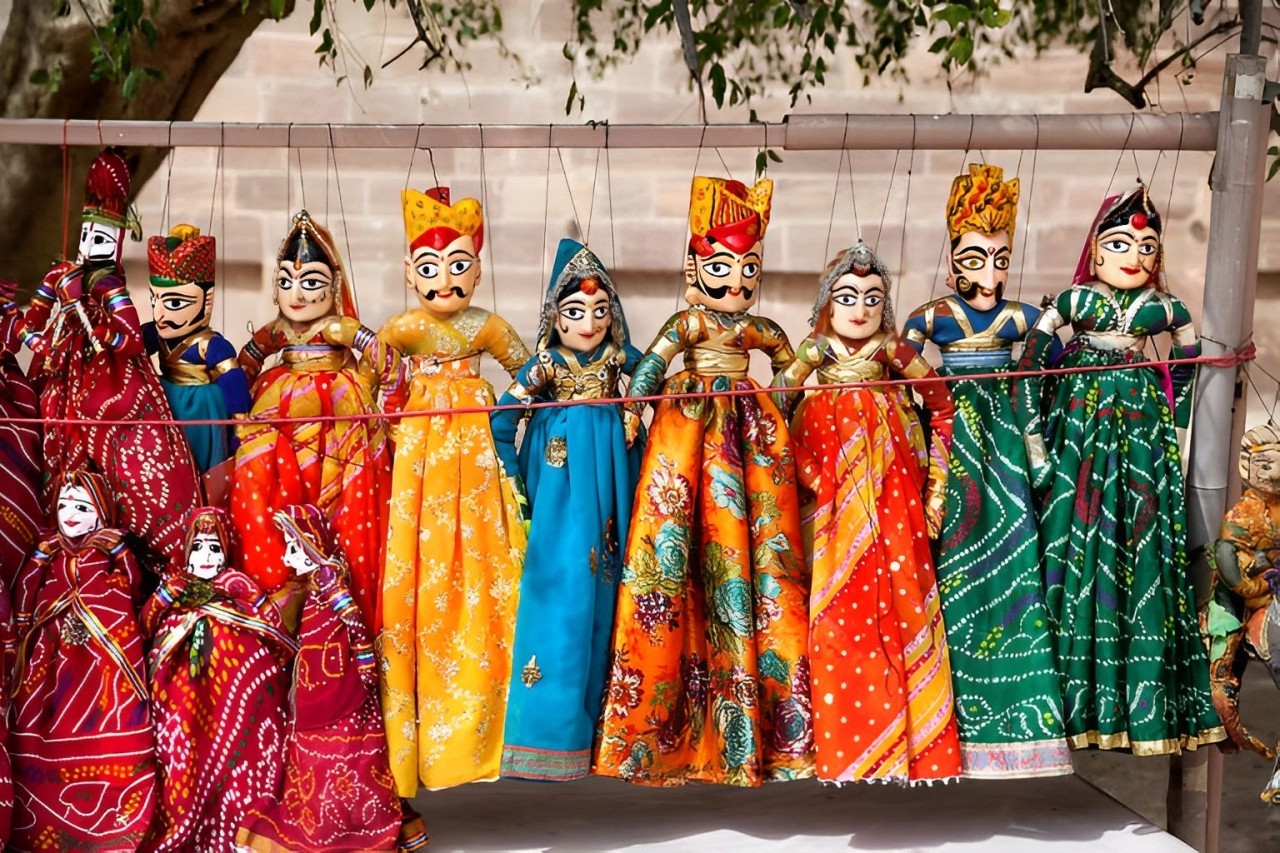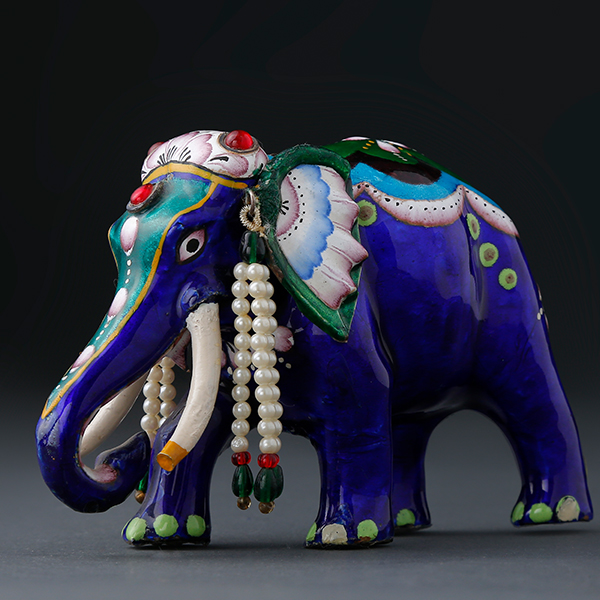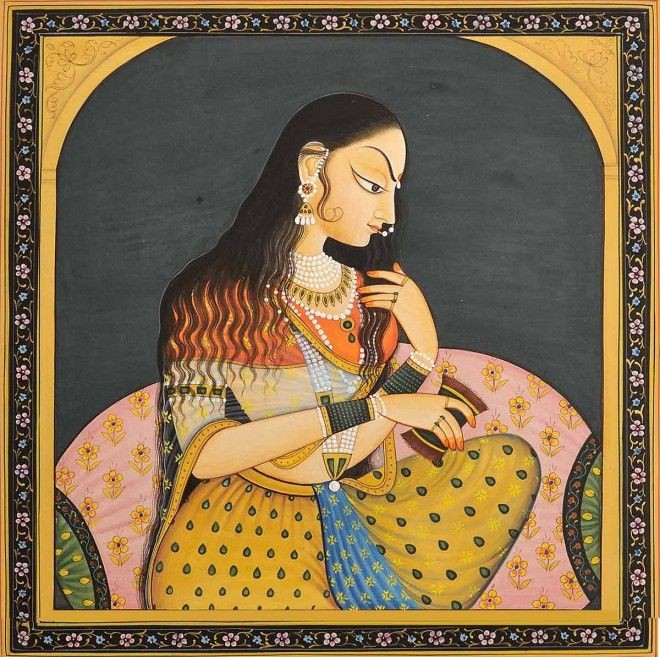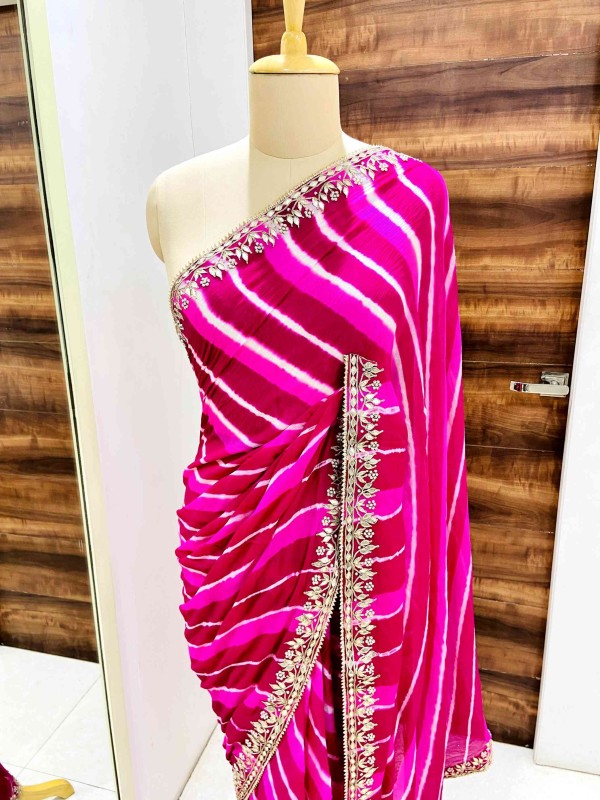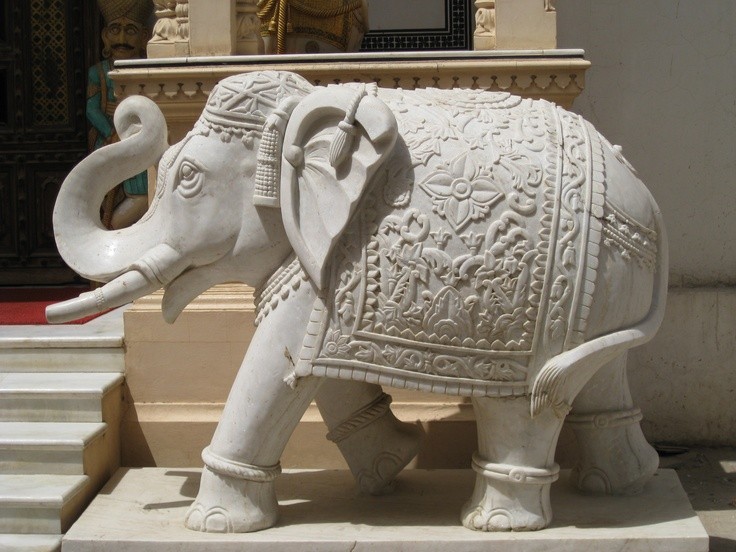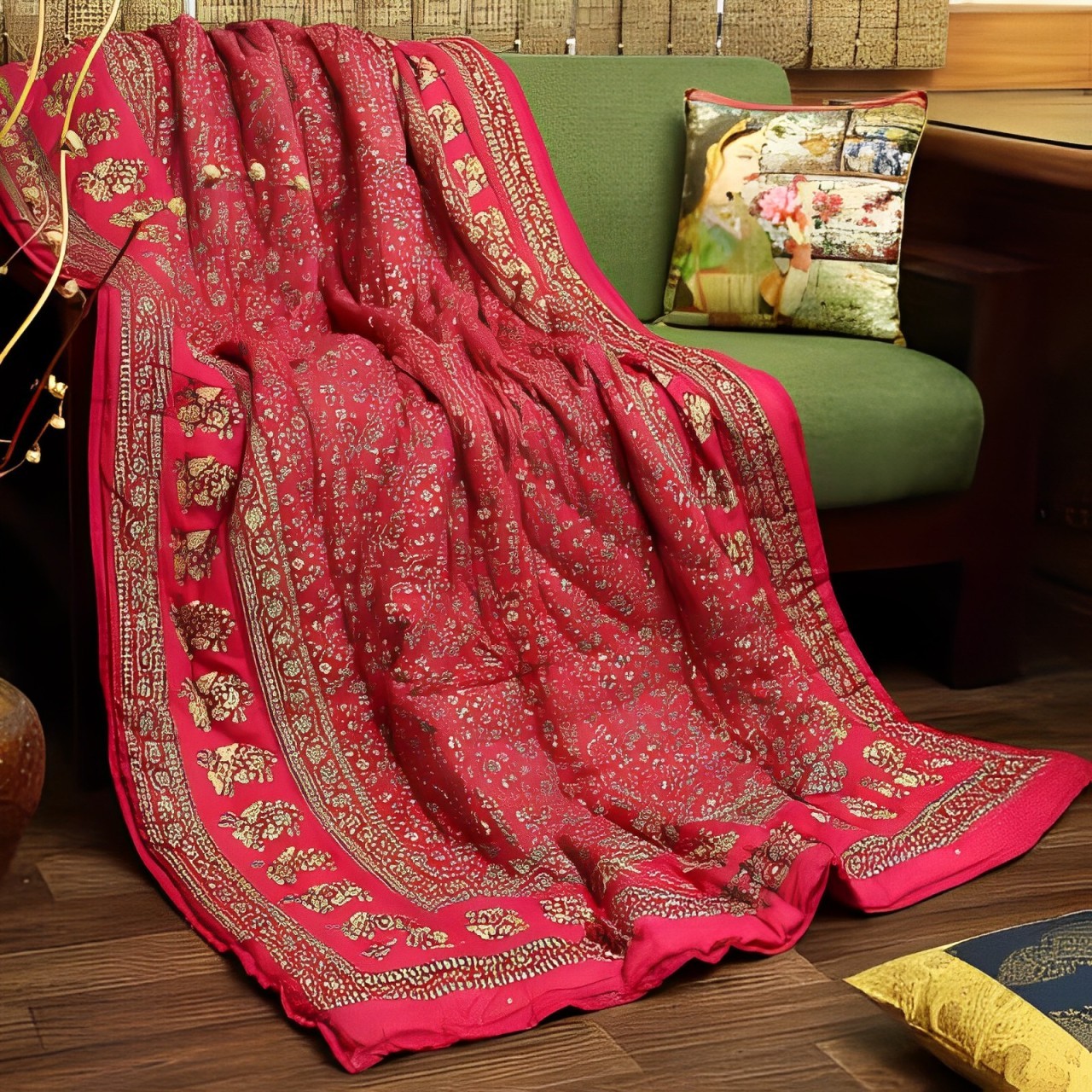Gemstones Jaipur
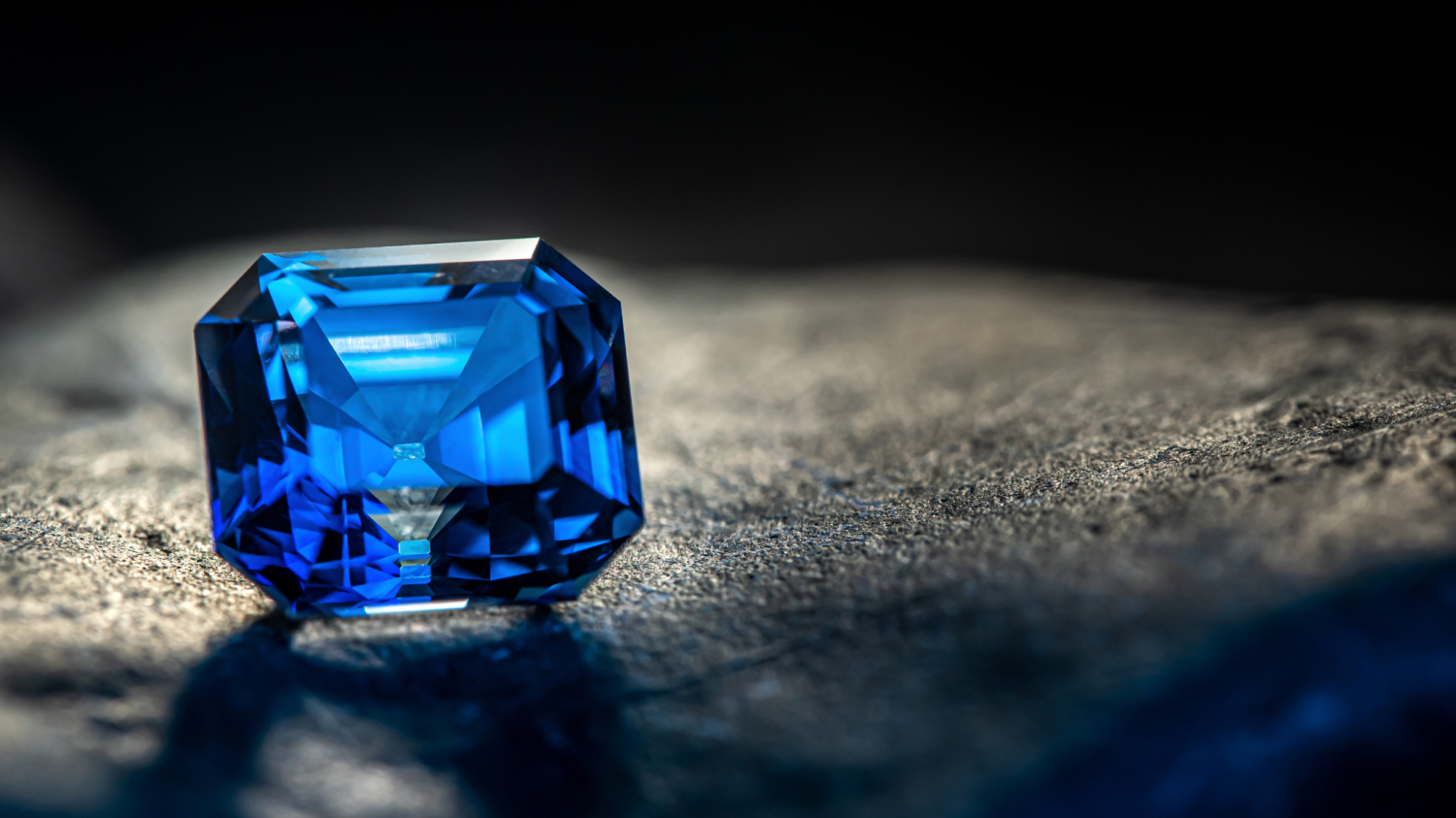
A gemstone (also called a fine gem, jewel, precious stone, semiprecious stone, or simply gem) is a piece of mineral crystal which, in cut and polished form, is used to make jewellery or other adornments
However, certain rocks (such as lapis lazuli, opal, and obsidian) and occasionally organic materials that are not minerals (such as amber, jet, and pearl) are also used for jewellery and are therefore often considered to be gemstones as well. Most gemstones are hard, but some soft minerals are used in jewellery because of their lustre or other physical properties that have aesthetic value. Rarity and notoriety are other characteristics that lend value to gemstones.
Found all over the world, the industry of coloured gemstones (this meaning anything other than diamonds) is currently estimated to be around 10–12 billion US dollars.
Apart from jewellery, from earliest antiquity engraved gems and hardstone carvings, such as cups, were major luxury art forms. A gem expert is a gemologist, a gem maker is called a lapidarist or gem cutter; a diamond cutter is called a diamantaire.
The Rich History of Gemstones in India
India and its opulent history of gemstones is no news. The ancient structures and architectures are a living prototype of the treasures and affluence embedded in the vast lands of the subcontinent. For as long as 2,000 years, India was the only country that served the need of lavish gems and jewels of the entire world. From the admirable Golconda diamonds to the remarkably coveted Kashmir sapphires and of course the Kohinoor - India has always been the peerless land of gemstones for very evident reasons. Today, Jaipur is the city that is leading this thunderous legacy of the country.
“City of Gems”?
Capital of the state of Rajasthan and popularly known as “The Pink City”, Jaipur is rapidly growing into becoming a gemstone paradise of the country. Earlier, the only jewellery production process that was majorly performed in the city was sourcing and polishing precious and semi-precious gemstones of the finest cuts. But today, the gemstone industry in Jaipur has enlarged, so much so that currently it is one of India’s largest exporters of premium gemstones and jewellery, grossing over 2,000 crores per year! A huge part of this colossal development of the “City of Gems” can be accredited to the finest quality gemstones found here and the master craftsmanship of the local artisans.
You will find enormous Gem dealers in Jaipur trading variety of gems like diamond, ruby, Neelam, emerald, garnet etc. The best and the biggest market for loose gemstones as well as gem jewellery in Jaipur is Johari Bazaar. This is the place where you found rough, semi-finished and finished Gemstones and manufacturers from across the world bring their creations like beads and finished Jewellery here and sold to different Gem dealers in Jaipur located in the main Johri Bazaar Road.
Emerald is particularly famous in Jaipur. And Jaipur is one of the leading emerald cutting and trading centres in the world.
Are Gemstones in India Affordable?
Indian gemstones are affordable for various reasons. When compared to the international market, here are the top differences that make India one of the most budget-friendly destinations for high-quality gemstones:
Plenty of Mines - There is an abundance of mines in India. This makes the country, the largest wholesaler of gemstones in the world. And thus, wholesale gemstone jewellery in India is reasonably priced.
Vast Variety of Stones - India and its mines are rich and have a bountiful variety of precious or semi-precious stones. Many stores provide a wide range of elegant precious gemstones such as Emeralds, Rubies, Spinels, Sapphires, and variations in semi-precious stones like Agate, Amethyst, Moonstone, Garnet, Spinel, etc. Indian mines offer a plentiful supply of these and more gemstones, so the price factor never disappoints.
Inexpensive Labour - India is one of those countries that have high availability of cheaply priced labour. So, the cutting, polishing, and making charges on loose gemstones and gemstone jewellery is also low. This is another reason why Indian gemstones are inexpensive.
Proficient and Highly Experienced Craftsmen - India is one of those countries where you can find highly skilled craftsmanship at a low cost because they have got these skills from their ancestors as a gift and are traditionally devoted to the same work at a minimal cost. So, cutting, polishing, and making charges on a loose gemstone or Stone jewellery is also moderate. It is another reason why Indian gemstones are inexpensive.
Value - Gemstones have no universally accepted grading system. Diamonds are graded using a system developed by the Gemological Institute of America (GIA) in the early 1950s. Historically, all gemstones were graded using the naked eye. The GIA system included a major innovation: the introduction of 10x magnification as the standard for grading clarity. Other gemstones are still graded using the naked eye (assuming 20/20 vision).
A mnemonic device, the "four Cs" (colour, cut, clarity, and carats), has been introduced to help describe the factors used to grade a diamond. With modification, these categories can be useful in understanding the grading of all gemstones. The four criteria carry different weights depending upon whether they are applied to coloured gemstones or to colourless diamonds. In diamonds, the cut is the primary determinant of value, followed by clarity and colour. The ideal cut diamond will sparkle, to break down light into its constituent rainbow colours (dispersion), chop it up into bright little pieces (scintillation), and deliver it to the eye (brilliance). In its rough crystalline form, a diamond will do none of these things; it requires proper fashioning and this is called "cut". In gemstones that have colour, including coloured diamonds, the purity, and beauty of that colour is the primary determinant of quality.
Physical characteristics that make a coloured stone valuable are colour, clarity to a lesser extent (emeralds will always have a number of inclusions), cut, unusual optical phenomena within the stone such as colour zoning (the uneven distribution of colouring within a gem) and asteria (star effects). Ancient Greeks, for example, greatly valued asteria gemstones, which they regarded as powerful love charms, and Helen of Troy was supposed to have worn star-corundum.
Aside from the diamond, ruby, sapphire, and emerald, the pearl (not, strictly speaking, a gemstone) and opal have also been considered to be precious. Up to the discoveries of bulk amethyst in Brazil in the 19th century, amethyst was considered a "precious stone" as well, going back to ancient Greece. Even in the last century certain stones such as aquamarine, peridot and cat's eye (cymophane) have been popular and hence been regarded as precious.
Today the gemstone trade no longer makes such a distinction. Many gemstones are used in even the most expensive jewellery, depending on the brand-name of the designer, fashion trends, market supply, treatments, etc. Nevertheless, diamonds, rubies, sapphires, and emeralds still have a reputation that exceeds those of other gemstones.
Rare or unusual gemstones, generally understood to include those gemstones which occur so infrequently in gem quality that they are scarcely known except to connoisseurs, include andalusite, axinite, cassiterite, clinohumite and red beryl.
Gemstone pricing and value are governed by factors and characteristics in the quality of the stone. These characteristics include clarity, rarity, freedom from defects, the beauty of the stone, as well as the demand for such stones. There are different pricing influencers for both coloured gemstones, and for diamonds. The pricing on coloured stones is determined by market supply-and-demand, but diamonds are more intricate. Diamond value can change based on location, time, and on the evaluations of diamond vendors.
The Four Cs of Gem Industry
- Colour: Gemologist usually describe gem colour by referring to three properties: hue, tone, and saturation.
- Hue: When most people describe colours, they probably mean hue. The basic hues are red, orange, yellow, green, blue, violet, and purple. Black, white, and brown refer to tones and saturation, not hues.
- Tone: A gem's tone refers to a gem's relative lightness or darkness. Black and white are tones, from darkest to lightest.
- Saturation: A gem's saturation refers to the intensity of its hue. Colours can be strong or soft. Pink is desaturated red. Warm colours, like red and orange, become shades of brown as their saturation decreases.
For coloured gemstones, generally speaking, highest values go to stones with pure hues and strong, rich colours.
Colour Grades for High-Value Coloured Gems:
With high-value gems, subtle variations make a significant difference in gem grading and price. For example, a slightly orangish ruby won't be worth nearly as much as a pure red. Most people can't see the difference. To an expert grader, however, it makes a significant difference.
Colour Grades for Moderate-Value Coloured Gems:
Colour has less of an effect on the gem grading and value of moderately priced gems. Tourmaline, for example, comes in every possible colour. Unless a gem has an exceptionally pure green, red, or pink, hue colour affects the value of all tourmalines equally. The other factors (clarity, cut, and carat) will determine the gem's value.
Diamond Colour Grades:
Gemologist colour grade diamonds on how close they come to colourless. The highest diamond colour grade is colourless. (Note that this differs from the highest colour grades for coloured gemstones).
The top three grades that indicate colourlessness for diamonds (D to F) vary subtly only by differences in transparency. The next four grades cover "nearly colourless" (G to J), which means diamonds with these grades will appear colourless when set in jewellery. It takes an expert in a laboratory setting to distinguish between grades G to J. Nevertheless, each grade represents a significant change in value.
Clarity:
Gemstones contain a wide variety of inclusions. In faceted gems, inclusions are defined as anything that will interfere with the free passage of light. These can include little bits of minerals, hollow areas, and fractures. Clarity grading addresses the visual and structural impact of these things.
Diamond Clarity Grades:
As with colour, tiny differences only apparent to the grader can have a significant impact on value. Diamond clarity grading best exemplifies this. Several grades indicate diamonds with inclusions invisible to the naked eye, which have no effect on the stone's beauty. However, the difference in value is substantial. At one end, you have something that an expert with 10X magnification can find with difficulty. At the other, you have something that is easy to find with magnification.
Coloured Gem Clarity Grades:
When gem grading most coloured stones, gemologists simply note whether a gem is "eye-clean" (with inclusions invisible to the naked eye) or else slightly, moderately, or heavily included. Eye-visible inclusions always lower a gem's value, but the change isn't applied equally. In the GIA clarity grading system, coloured gems are also grouped into three clarity types: "Type I," usually eye-clean; "Type II," usually included; and "Type III," almost always included.
Emeralds are Special Cases:
Emeralds fall into the Type III category. However, you can't compare their clarity with that of any other gems. If you want an emerald without any eye-visible inclusions, you're limited to small stones. Otherwise, if you want a larger emerald, you must accept the inclusions and find value in the colour.
Cut:
A gemstone's cut, the workmanship that went into fashioning it, is one of the most important factors in gem grading. It has a tremendous effect on a gem's appearance. The cut is also one of the most difficult qualities for the non-professional to judge, due to the variations involved. Nevertheless, consumers can conduct some basic examinations.
Symmetry:
First, look at the shape of the stone. Of course, some gem cutters carve gems into beautiful "freeform" shapes. Most gems, however, are intended to have regular shapes. If this is what you're looking for, look at the symmetry. Does it bulge or is it symmetrical in all directions? Look at the stone from the side and ends. Again, it should be symmetrical in all directions. If not, you must decide how much that will affect your appreciation of the stone.
Magnification:
Insist on inspecting any gem you're considering buying under magnification. Look at the facets, the surface areas that reflect light. They should be smooth and mirror-like. Pits, scratches, or dull areas indicate a poor polish. Such a gem may look good in the store, but someday you'll compare it with a well-polished gem. You'll be disappointed with your purchase.
If you're examining a faceted gem, look at the facet junctions, too. On a well-cut stone, they'll be crisp and come together at a single point. You may see slightly rounded facets not quite meeting where they should. Just how far off will affect the gem's brilliance.
Compare Similar Stones:
While other cut factors may be too complex for non-professionals, you can get a good idea of a gem's cutting quality simply by comparing it with other gems. When you do this, make sure to compare similar stones. For example, an amethyst will never have the brilliance of a topaz. Dark stones don't have the brightness of light ones, etc.
When comparing similar stones, judge the overall light return. Let's say you examine two similar gems of the same size and colour. If you find one has much more brilliance and sparkle, you're seeing the impact of cutting.
Windowing:
Pay particular attention to windowing, a condition where light passes straight through the gem's centre rather than reflecting back to the viewer.
You can spot this easily. The centre will be much lighter than the outside of the gem and have no flashes of light. Some windows are small. Others are quite large and hideous.
Like a poorly polished gem, a gem with a large window might look good in the store. Eventually, however, you'll notice the difference between a well-cut stone and what you bought.
Cabochons:
Non-professionals have an easier time examining cabochons or cabs, gems cut with flat bottoms and domed tops.
Start by checking the polish under magnification. Then, hold the stone a short distance from your head and rotate the gem slowly. Notice how the light moves across the surface. On a well-cut cab, it will flow smoothly from one side to the other. If poorly shaped, the light will instead "snake" across the surface. You can also find surface irregularities and poorly polished areas this way.
Carat:
A carat is a unit for measuring gem weight. One carat equals 1/5 of a gram, or 200 milligrams. One kilogram (approximately 2.2 pounds) equals 5,000 carats.
Increases in Price per Carat:
Simply put, larger stones are less common than smaller ones. Hence, they often demand a higher price per carat. For example, a quarter-carat topaz may cost $60 per carat, or $15 total. A half-carat topaz, with the same colour, clarity, and cutting grades, might cost $100 per carat, or $50 total. For a topaz one-carat and over in size, the price could reach $200 per carat. So, a one-carat stone will cost $200 total, not $60 or $100.
Choosing Large or Small Gems:
Choosing the right gem size is a personal matter. Bold personalities might prefer large gemstones. Someone with delicate sensibilities might prefer smaller gems. Most people will likely fall between these extremes.
For tighter budgets, smaller stones have a significant advantage. Not only do they cost less per weight, the "amount of gem" you see is disproportionate to size. This is because gem volume goes up faster than exterior dimensions. For example, a ½-carat, round diamond measures 5 mm in diameter. A ¾-carat diamond measures 6 mm. A full-carat diamond measures 6.5 mm.
To a casual observer, the ½ and ¾-carat stones seem about the same size. The ¾ and full-carat stones also look about the same size. However, they can have considerable price differences.
Clusters:
Jewellers often cluster small gems to give the appearance of more gemstone.
Seven 1.6 mm diamonds, set close together, will take up as much space as a whole-carat diamond. If set on white gold, distinguishing the separate stones proves difficult. Hence, these settings are often called "illusion settings." While these seven stones approach the visual appeal of a one-carat diamond, they only weigh 0.14 carats. Considering that the price per carat for small diamonds is also much lower, you'll see a significant cost difference. A cluster ring's price could range in the hundreds of dollars, rather than the thousands.
You'll find coloured gems often clustered for the same reason. You'll get more "visible gem" for less money. If your budget can't accommodate your first gem choice, consider a setting with several smaller gems.
Grading:
There are a number of laboratories which grade and provide reports on gemstones.
- Gemological Institute of America (GIA), the main provider of education services and diamond grading reports
- International Gemological Institute (IGI), independent laboratory for grading and evaluation of diamonds, jewellery, and coloured stones
- Hoge Raad Voor Diamant (HRD Antwerp), The Diamond High Council, Belgium is one of Europe's oldest laboratories; its main stakeholder is the Antwerp World Diamond Centre
- American Gemological Society (AGS) is not as widely recognized nor as old as the GIA
- American Gem Trade Laboratory which is part of the American Gem Trade Association (AGTA), a trade organization of jewellers and dealers of coloured stones
- American Gemological Laboratories (AGL), owned by Christopher P. Smith
- European Gemological Laboratory (EGL), founded in 1974 by Guy Margel in Belgium
- Gemological Association of All Japan (GAAJ-ZENHOKYO), Zenhokyo, Japan, active in gemmological research
- The Gem and Jewellery Institute of Thailand (Public Organization) or GIT, Thailand's national institute for gemmological research and gem testing, Bangkok
- Gemmology Institute of Southern Africa, Africa's premium gem laboratory
- Asian Institute of Gemmological Sciences (AIGS), the oldest gemmological institute in South East Asia, involved in gemmological education and gem testing
- Swiss Gemmological Institute (SSEF), founded by Henry Hänni, focusing on coloured gemstones and the identification of natural pearls
- Gübelin Gem Lab, the traditional Swiss lab founded by Eduard Gübelin
- Institute for Gems and Gold Research of VINAGEMS (Vietnam), founded by Dr. Van Long Pham
Each laboratory has its own methodology to evaluate gemstones. A stone can be called "pink" by one lab while another lab calls it "padparadscha". One lab can conclude a stone is untreated, while another lab might conclude that it is heat-treated. To minimize such differences, seven of the most respected labs, AGTA-GTL (New York), CISGEM (Milano), GAAJ-ZENHOKYO (Tokyo), GIA (Carlsbad), GIT (Bangkok), Gübelin (Lucerne) and SSEF (Basel), have established the Laboratory Manual Harmonisation Committee (LMHC), for the standardization of wording reports, promotion of certain analytical methods and interpretation of results. Country of origin has sometimes been difficult to determine, due to the constant discovery of new source locations. Determining a "country of origin" is thus much more difficult than determining other aspects of a gem (such as cut, clarity, etc.).
Another important new gemstone that has been rising in popularity is Cuprian Elbaite Tourmaline which are also called "Paraiba Tourmaline". Paraiba tourmaline were first discovered in early 1990 and recently in 2007 in Mozambique, Africa. They are famous for their Glowing Neon Blue Colour. Paraiba Tourmaline have become one of the most popular gemstones in recent times thanks to their unique colour and recently considered to be one of the important gemstones after Ruby, Emerald and Sapphire according to Gübelin Gemlab. Even though it is a tourmaline, paraiba are considered to be one of the most expensive gemstones.
Various types of Gemstones you can buy in Jaipur
Diamond -
Diamond is a solid form of the element carbon with its atoms arranged in a crystal structure called diamond cubic. Another solid form of carbon known as graphite is the chemically stable form of carbon at room temperature and pressure, but diamond is metastable and converts to it at a negligible rate under those conditions. Diamond has the highest hardness and thermal conductivity of any natural material, properties that are used in major industrial applications such as cutting and polishing tools. They are also the reason that diamond anvil cells can subject materials to pressures found deep in the Earth.
Because the arrangement of atoms in diamond is extremely rigid, few types of impurity can contaminate it (two exceptions are boron and nitrogen). Small numbers of defects or impurities (about one per million of lattice atoms) colour diamond blue (boron), yellow (nitrogen), brown (defects), green (radiation exposure), purple, pink, orange, or red. Diamond also has a very high refractive index and a relatively high optical dispersion.
Ruby -
A ruby is a pinkish red to blood-red coloured gemstone, a variety of the mineral corundum (aluminium oxide). Ruby is one of the most popular traditional jewellery gems and is very durable. Ruby is one of the traditional cardinal gems, alongside amethyst, sapphire, emerald, and diamond. The word ruby comes from ruber, Latin for red. The colour of a ruby is due to the element chromium.
Some gemstones that are popularly or historically called rubies, such as the Black Prince's Ruby in the British Imperial State Crown, are actually spinels. These were once known as "Balas rubies".
Sapphire -
Sapphire is a precious gemstone, a variety of the mineral corundum, consisting of aluminium oxide (α-Al2O3) with trace amounts of elements such as iron, titanium, cobalt, lead, chromium, vanadium, magnesium, boron, and silicon. The name sapphire is derived via the Latin "sapphirus" from the Greek "sappheiros", which referred to lapis lazuli. It is typically blue, but natural "fancy" sapphires also occur in yellow, purple, orange, and green colours; "parti sapphires" show two or more colours. Red corundum stones also occur, but are called rubies rather than sapphires. Pink-coloured corundum may be classified either as ruby or sapphire depending on locale. Commonly, natural sapphires are cut and polished into gemstones and worn in jewellery. They also may be created synthetically in laboratories for industrial or decorative purposes in large crystal boules. Because of the remarkable hardness of sapphires – 9 on the Mohs scale (the third hardest mineral, after diamond at 10 and moissanite at 9.5) – sapphires are also used in some non-ornamental applications, such as infrared optical components, high-durability windows, wristwatch crystals and movement bearings, and very thin electronic wafers, which are used as the insulating substrates of special-purpose solid-state electronics such as integrated circuits and Gan-based blue LEDs. Sapphire is the birthstone for September and the gem of the 45th anniversary. A sapphire jubilee occurs after 65 years.
Emerald -
Emerald is a gemstone and a variety of the mineral beryl (Be3Al2(SiO3)6) coloured green by trace amounts of chromium or sometimes vanadium. Beryl has a hardness of 7.5–8 on the Mohs scale. Most emeralds have lots of material trapped inside during the gem's formation, so their toughness (resistance to breakage) is classified as generally poor. Emerald is a cyclosilicate.
Amethyst -
Amethyst is a violet variety of quartz. The name comes from the Koine Greek αμέθυστος amethystos from α- a-, "not" and μεθύσκω (Ancient Greek) methysko / μεθώ metho (Modern Greek), "intoxicate", a reference to the belief that the stone protected its owner from drunkenness. Ancient Greeks wore amethyst and carved drinking vessels from it in the belief that it would prevent intoxication. Amethyst, a semiprecious stone, is often used in jewellery.
Topaz -
Topaz is a silicate mineral of aluminium and fluorine with the chemical formula Al2SiO4(F,OH)2. It is used as a gemstone in jewellery and other adornments. Common topaz in its natural state is colourless, though trace element impurities can make it pale blue or golden brown to yellow orange. Topaz is often treated with heat or radiation to make it a deep blue, reddish-orange, pale green, pink, or purple.
Although it is often associated with golden yellow and blue, it comes in a variety of colours, including colourless. The rarest are natural pinks, reds, and delicate golden oranges, sometimes with pink hues.
Topaz is a nesosilicate mineral. It is one of the hardest naturally occurring minerals and has a relatively low index of refraction. It occurs in many places in the world.
Garnet -
Garnets are a group of silicate minerals that have been used since the Bronze Age as gemstones and abrasives.
All species of garnets possess similar physical properties and crystal forms, but differ in chemical composition. The different species are pyrope, almandine, spessartine, grossular (varieties of which are hessonite or cinnamon-stone and tsavorite), uvarovite and andradite. The garnets make up two solid solution series: pyrope-almandine-spessartine (pyralspite), with the composition range [Mg,Fe,Mn]3Al2(SiO4)3; and uvarovite-grossular-andradite (ugrandite), with the composition range Ca3[Cr,Al,Fe]2(SiO4)3.
Aquamarine -
Aquamarine’s name comes from the Latin for seawater and it was said to calm waves and keep sailors safe at sea. March’s birthstone was also thought to enhance the happiness of marriages. The best gems combine high clarity with limpid transparency and blue to slightly greenish blue hues. Like many beryls, aquamarine forms large crystals suitable for sizable fashioned gems and carvings.
Opal -
Opal is a hydrated amorphous form of silica (SiO2·nH2O); its water content may range from 3 to 21% by weight, but is usually between 6 and 10%. Due to its amorphous property, it is classified as a mineraloid, unlike crystalline forms of silica, which are considered minerals. It is deposited at a relatively low temperature and may occur in the fissures of almost any kind of rock, being most commonly found with limonite, sandstone, rhyolite, marl, and basalt.
The name opal is believed to be derived from the Sanskrit word upala, which means 'jewel', and later the Greek derivative opállios, which means 'to see a change in colour'.
There are two broad classes of opal: precious and common. Precious opal displays play-of-colour (iridescence); common opal does not. Play-of-colour is defined as "a pseudo chromatic optical effect resulting in flashes of coloured light from certain minerals, as they are turned in white light." The internal structure of precious opal causes it to diffract light, resulting in play-of-colour. Depending on the conditions in which it formed, opal may be transparent, translucent, or opaque, and the background colour may be white, black, or nearly any colour of the visual spectrum. Black opal is considered the rarest, while white, gray, and green opals are the most common.
Turquoise -
Turquoise is an opaque, blue-to-green mineral that is a hydrous phosphate of copper and aluminium, with the chemical formula CuAl6(PO4)4(OH)8·4H2O. It is rare and valuable in finer grades and has been prized as a gemstone for millennia due to its unique hue.
Like most other opaque gems, turquoise has been devalued by the introduction of treatments, imitations, and synthetics into the market. The robin egg blue or sky-blue colour of the Persian turquoise mined near the modern city of Nishapur, Iran, has been used as a guiding reference for evaluating turquoise quality.
Cutting and Polishing -
A few gemstones are used as gems in the crystal or other forms in which they are found. Most, however, are cut and polished for usage as jewellery. The two main classifications are stones cut as smooth, dome-shaped stones called cabochons, and stones which are cut with a faceting machine by polishing small flat windows called facets at regular intervals at exact angles.
Stones which are opaque or semi-opaque such as opal, turquoise, variscite, etc. are commonly cut as cabochons. These gems are designed to show the stone's colour or surface properties as in opal and star sapphires. Grinding wheels and polishing agents are used to grind, shape and polish the smooth dome shape of the stones.
Gems that are transparent are normally faceted, a method that shows the optical properties of the stone's interior to its best advantage by maximizing reflected light which is perceived by the viewer as sparkle. There are many commonly used shapes for faceted stones. The facets must be cut at the proper angles, which varies depending on the optical properties of the gem. If the angles are too steep or too shallow, the light will pass through and not be reflected back toward the viewer. The faceting machine is used to hold the stone onto a flat lap for cutting and polishing the flat facets. Rarely, some cutters use special curved laps to cut and polish curved facets.
Treatment -
Gemstones are often treated to enhance the colour or clarity of the stone. In some cases, the treatment applied to the gemstone can also increase its durability. Even though natural gemstones can be transformed using the traditional method of cutting and polishing, other treatment options allow the stone's appearance to be enhanced. Depending on the type and extent of treatment, they can affect the value of the stone. Some treatments are used widely because the resulting gem is stable, while others are not accepted most commonly because the gem colour is unstable and may revert to the original tone.
Early History -
Before the innovation of modern-day tools, thousands of years ago, people were recorded to use a variety of techniques to treat and enhance gemstones. Some of the earliest methods of gemstone treatment date back to the Minoan Age, for example, foiling, which is where metal foil is used to enhance a gemstone's colour. Other methods that were recorded 2000 years ago in the book Natural History written by Pliny the Elder include oiling and dyeing/staining.
Heat -
Heat can either improve or spoil gemstone colour or clarity. The heating process has been well known to gem miners and cutters for centuries, and in many stone types heating is a common practice. Most citrine is made by heating amethyst, and partial heating with a strong gradient result in "ametrine" – a stone partly amethyst and partly citrine. Aquamarine is often heated to remove yellow tones, or to change green colours into the more desirable blue, or enhance its existing blue colour to a deeper blue.
Nearly all tanzanite is heated at low temperatures to remove brown undertones and give a more desirable blue / purple colour. A considerable portion of all sapphire and ruby is treated with a variety of heat treatments to improve both colour and clarity.
When jewellery containing diamonds is heated for repairs, the diamond should be protected with boric acid; otherwise, the diamond, which is pure carbon, could be burned on the surface or even burned completely up. When jewellery containing sapphires or rubies is heated, those stones should not be coated with boric acid (which can etch the surface) or any other substance. They do not have to be protected from burning, like a diamond (although the stones do need to be protected from heat stress fracture by immersing the part of the jewellery with stones in the water when metal parts are heated).
Radiation -
The irradiation process is widely practiced in jewellery industry and enabled the creation of gemstone colours that do not exist or are extremely rare in nature. However, particularly when done in a nuclear reactor, the processes can make gemstones radioactive. Health risks related to the residual radioactivity of the treated gemstones have led to government regulations in many countries.
Virtually all blue topaz, both the lighter and the darker blue shades such as "London" blue, has been irradiated to change the colour from white to blue. Most green quartz (Oro Verde) are also irradiated to achieve the yellow-green colour. Diamonds are mainly irradiated to become blue-green or green, although other colours are possible. When light-to-medium-yellow diamonds are treated with gamma rays they may become green; with a high-energy electron beam, blue.
Waxing/Oiling -
Emeralds containing natural fissures are sometimes filled with wax or oil to disguise them. This wax or oil is also coloured to make the emerald appear of better colour as well as clarity. Turquoise is also commonly treated in a similar manner.
Fracture Filling -
Fracture filling has been in use with different gemstones such as diamonds, emeralds, and sapphires. In 2006 "glass-filled rubies" received publicity. Rubies over 10 carats (2 g) with large fractures were filled with lead glass, thus dramatically improving the appearance. Such treatments are fairly easy to detect.
Bleaching -
Another treatment method that is commonly used to treat gemstones is bleaching. This method uses a chemical in order to reduce the colour of the gem. After bleaching, a combination treatment can be done by dying the gemstone once the unwanted colours are removed. Hydrogen peroxide is the most commonly used product used to alter gemstones and have notably been used to treat jade and pearls. The treatment of bleaching can also be followed by impregnation, which allows the gemstone's durability to be increased.
Synthetic and Artificial Gemstones -
Synthetic gemstones are distinct from imitation or simulated gems. Synthetic gems are physically, optically, and chemically identical to the natural stone, but are created in a laboratory. Imitation or simulated stones are chemically different from the natural stone, but may appear quite similar to it; they can be more easily manufactured synthetic gemstones of a different mineral (spinel), glass, plastic, resins, or other compounds.
Examples of simulated or imitation stones include cubic zirconia, composed of zirconium oxide, synthetic moissanite, and un-coloured, synthetic corundum or spinels; all of which are diamond simulants. The simulants imitate the look and colour of the real stone but possess neither their chemical nor physical characteristics. In general, all are less hard than diamond. Moissanite actually has a higher refractive index than diamond, and when presented beside an equivalently sized and cut diamond will show more "fire".
Cultured, synthetic, or "lab-created" gemstones are not imitations: The bulk mineral and trace colouring elements are the same in both. For example, diamonds, rubies, sapphires, and emeralds have been manufactured in labs that possess chemical and physical characteristics identical to the naturally occurring variety. Synthetic (lab created) corundum, including ruby and sapphire, is very common and costs much less than the natural stones. Small synthetic diamonds have been manufactured in large quantities as industrial abrasives, although larger gem-quality synthetic diamonds are becoming available in multiple carats.
Whether a gemstone is a natural stone or synthetic, the chemical, physical, and optical characteristics are the same: They are composed of the same mineral and are coloured by the same trace materials, have the same hardness and density and strength, and show the same colour spectrum, refractive index, and birefringence (if any). Lab-created stones tend to have a more vivid colour since impurities common in natural stones are not present in the synthetic stone. Synthetics are made free of common naturally occurring impurities that reduce gem clarity or colour unless intentionally added in order to provide a more drab, natural appearance, or to deceive an assayer.
Types of Synthetic Gemstones:
Some gemstones are more difficult to synthesize than others and not all stones are commercially viable to attempt to synthesize. These are the most common on the market currently.
Synthetic Corundum -
Includes ruby (red variation) and sapphire (other colour variations) both of which are considered highly desired and valued. Ruby was the first gemstone to be synthesized by Auguste Verneuil with his development of the flame-fusion process in 1902. Synthetic corundum continues to be made typically by flame-fusion as it is most cost-effective, but can also be produced through flux growth and hydrothermal growth.
Synthetic Beryl -
The most common synthesized beryl is emerald (green). Yellow, red and blue beryl are possible but much rarer. Synthetic emerald became possible with the development of the flux growth process and is produced in this way and well as hydrothermal growth.
Synthetic Quartz -
Types of synthetic quartz include citrine, rose quartz, and amethyst. Natural occurring quartz is not rare is synthetically produced as it has practical application outside of aesthetic purposes. Quartz generates an electric current when under pressure and is used in watches, clocks, and oscillators.
Synthetic Spinel -
Synthetic spinel was first produced by accident. It can be created in any colour making it popular to simulate various natural gemstones. It is created through flux growth and hydrothermal growth.
Creation Process of Synthetic Gemstones:
There are mainly two categories for creation of these minerals, melt or solution processes.
Verneuil Furnace:
Flame fusion process was the first process used which successfully created large quantities of synthetic gemstones to be sold on the market. This remains the most cost effective and common method of creating corundum today.
The flame fusion process is completed in a Verneuil furnace. The furnace consists of an inverted blowpipe burner which produces an extremely hot oxyhydrogen flame, a powder dispenser, and a ceramic pedestal. A chemical powder which corresponds to the desired gemstone is passed through this flames. This melts the ingredients which drop on to a plate and solidify into a crystal called a Boule. For corundum the flame must be 2000 °C. This process takes hours and yields a crystal with the same properties as its natural counterpart.
To produce corundum, a pure aluminium powder is used with different additives to achieve different colours.
- Chromic oxide for ruby
- Iron and titanium oxide for blue sapphire
- Nickel oxide for yellow sapphire
- Nickel, chromium and iron for orange sapphire
- Manganese for pink sapphire
- Copper for blue-green sapphire
- Cobalt for dark blue sapphire
Czochralski Process (Melt Process):
In 1918 this process was developed by J. Czochralski and is also referred to as the "crystal pulling" method. In this process, the required gemstone materials are added to a crucible. A seed stone is placed into the melt in the crucible. As the gem begins to crystallize on the seed, the seed is pulled away and the gem continues to grow. This is used for corundum but is currently the least popular method.
Flux Growth (Solution Process):
Flux growth process was the first process which was able to synthesize emerald. Flux growth begins with a crucible which can withstand high heat; either graphite or platinum which is filled with a molten liquid referred to as flux. The specific gem ingredients are added and dissolved in this fluid and recrystallize to form the desired gemstone. This is a longer process compared to the flame fusion process and can take two months up to a year depending on the desired final size.
Hydrothermal Growth (Solution Process):
Hydrothermal growth process attempts to imitate the natural growth process of minerals. The required gem materials are sealed in a container of water and placed extreme pressure. The water is heated beyond its boiling point which allows normally insoluble materials to dissolve. As more material cannot be added once the container is sealed, in order to create a larger gem the process would begin with a "seed" stone from a previous batch which the new material will crystallize on. This process takes a few weeks to complete.


